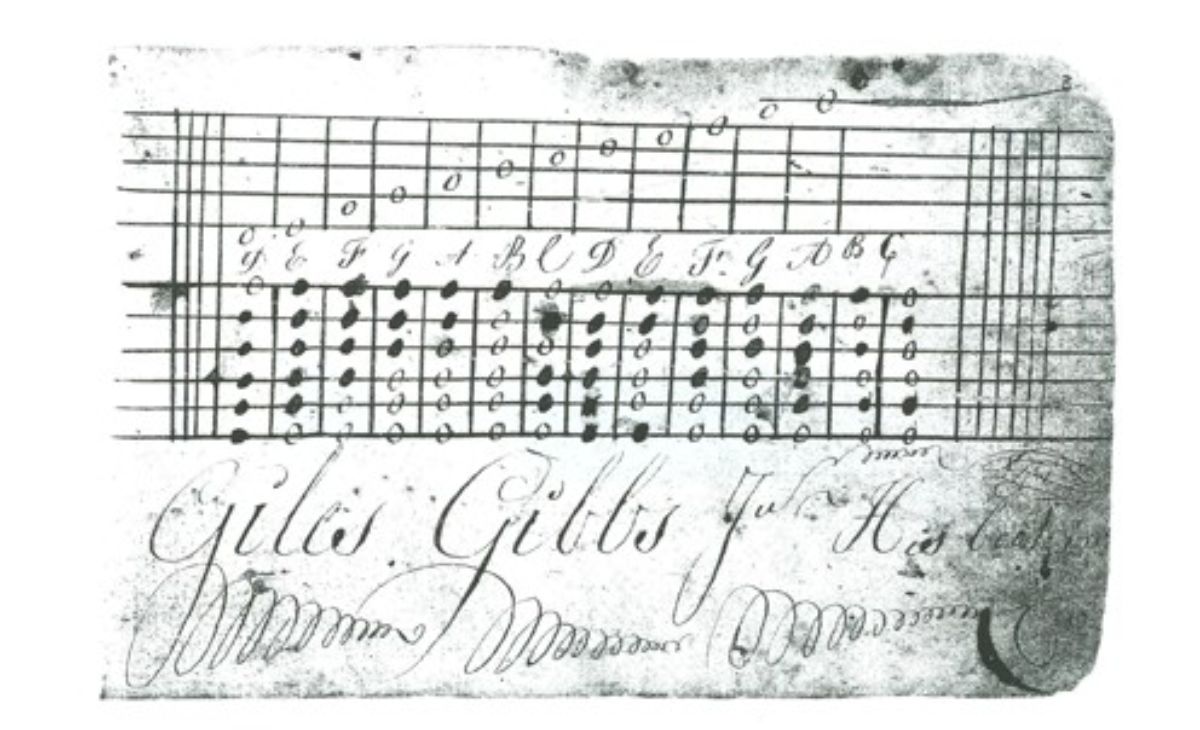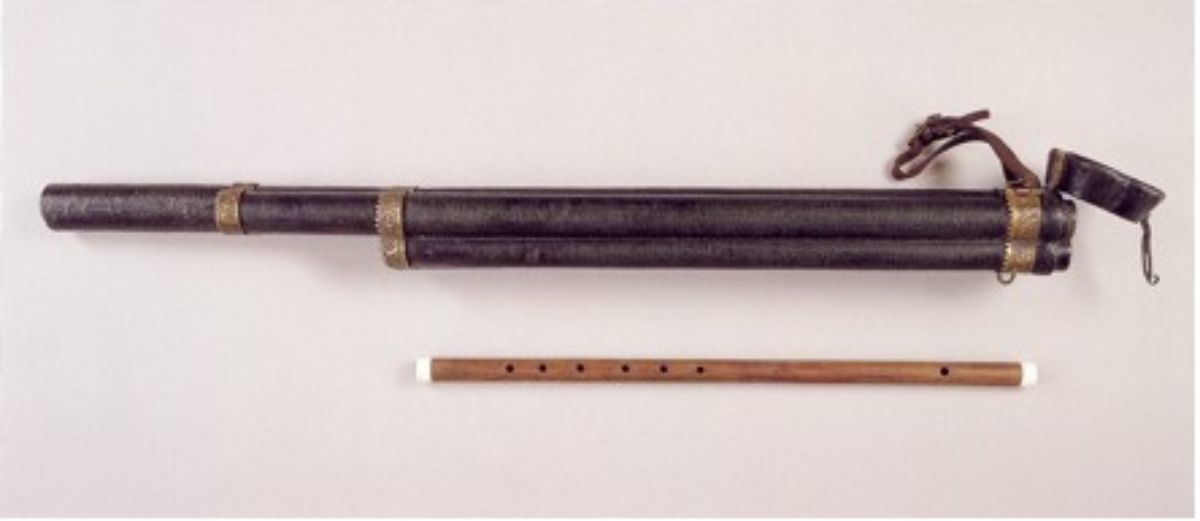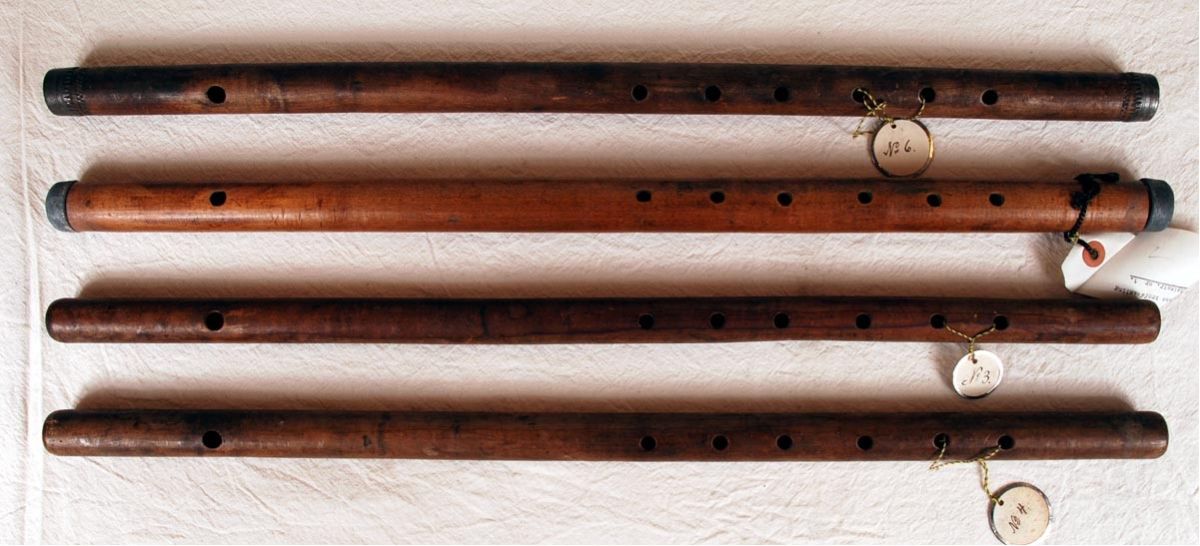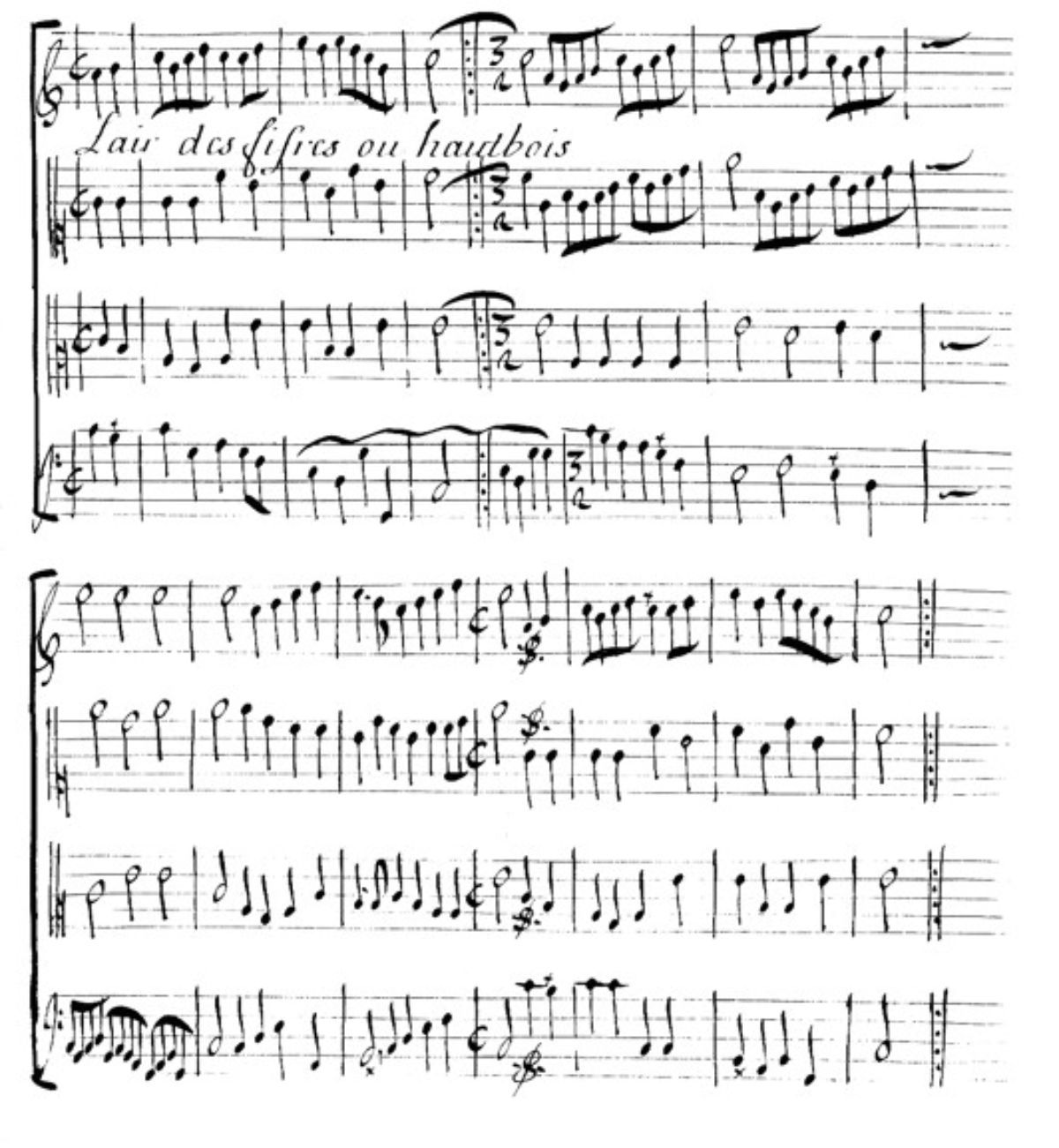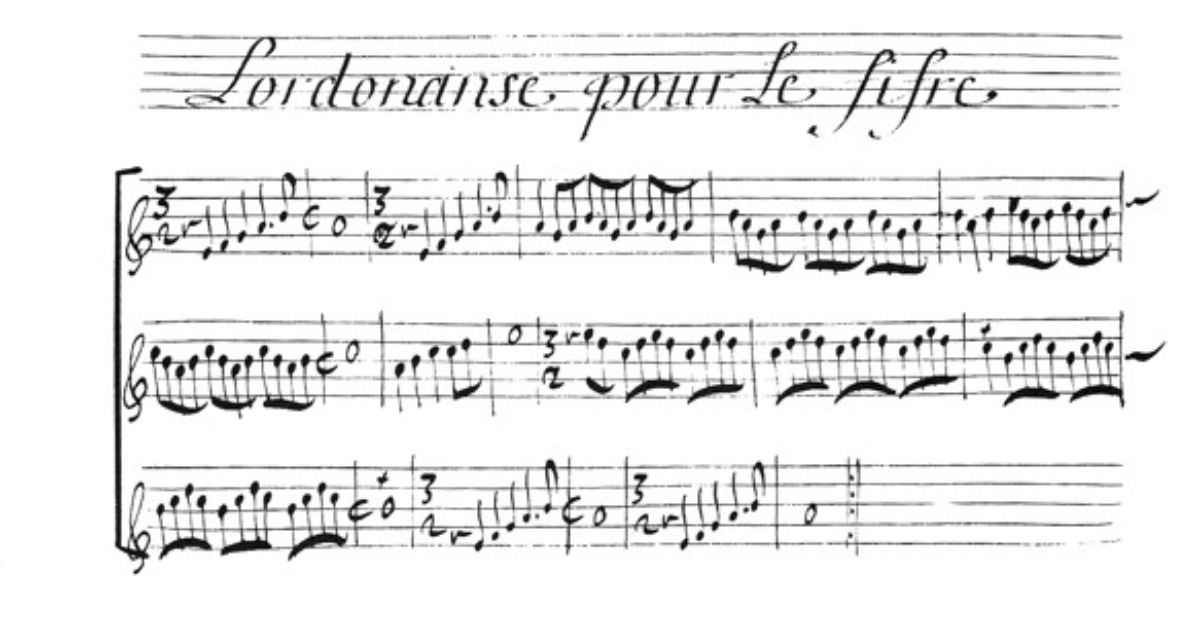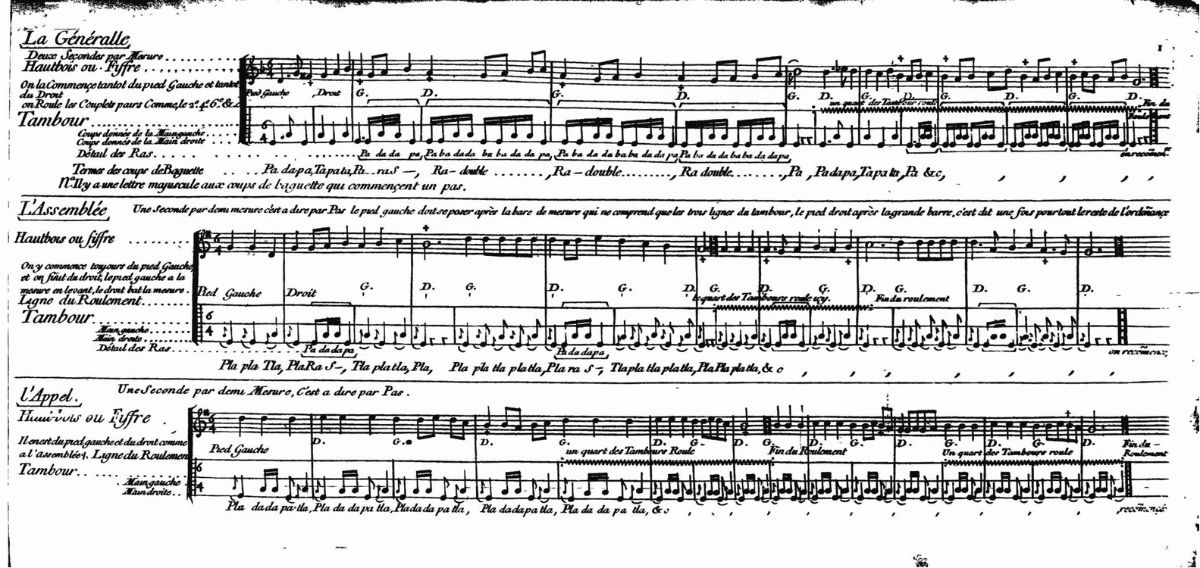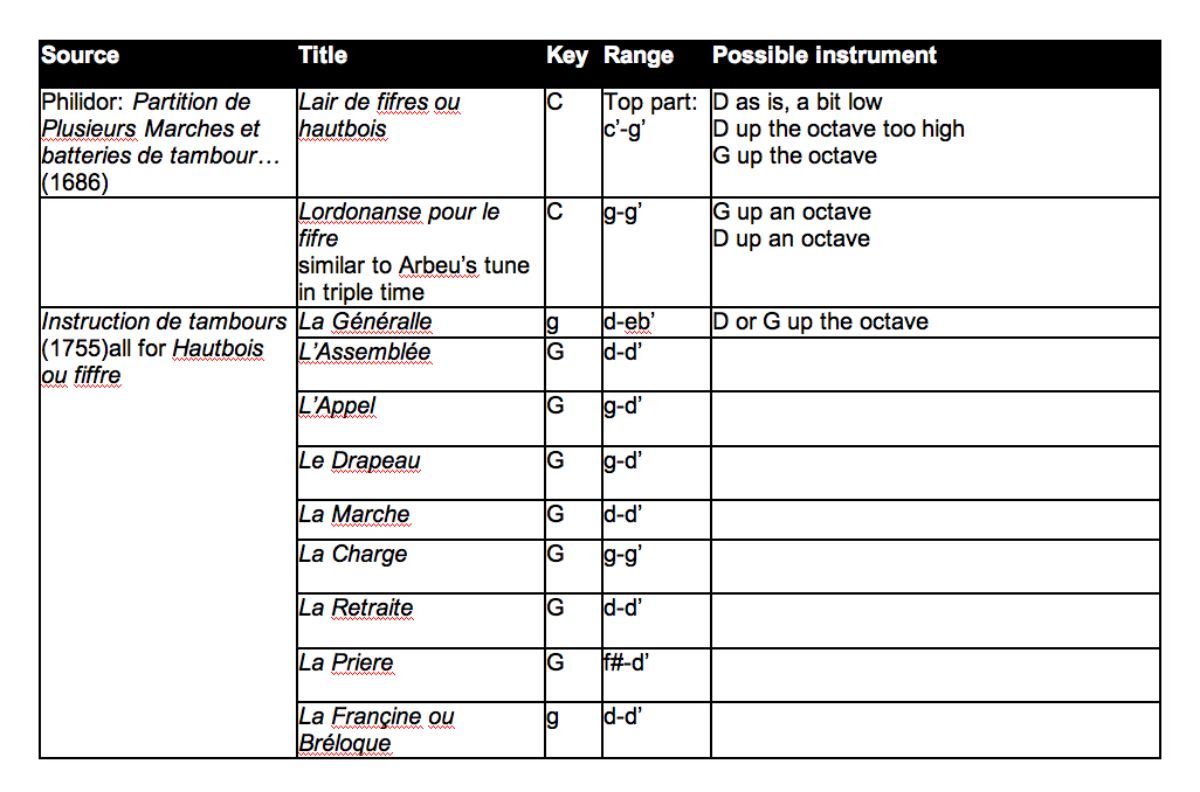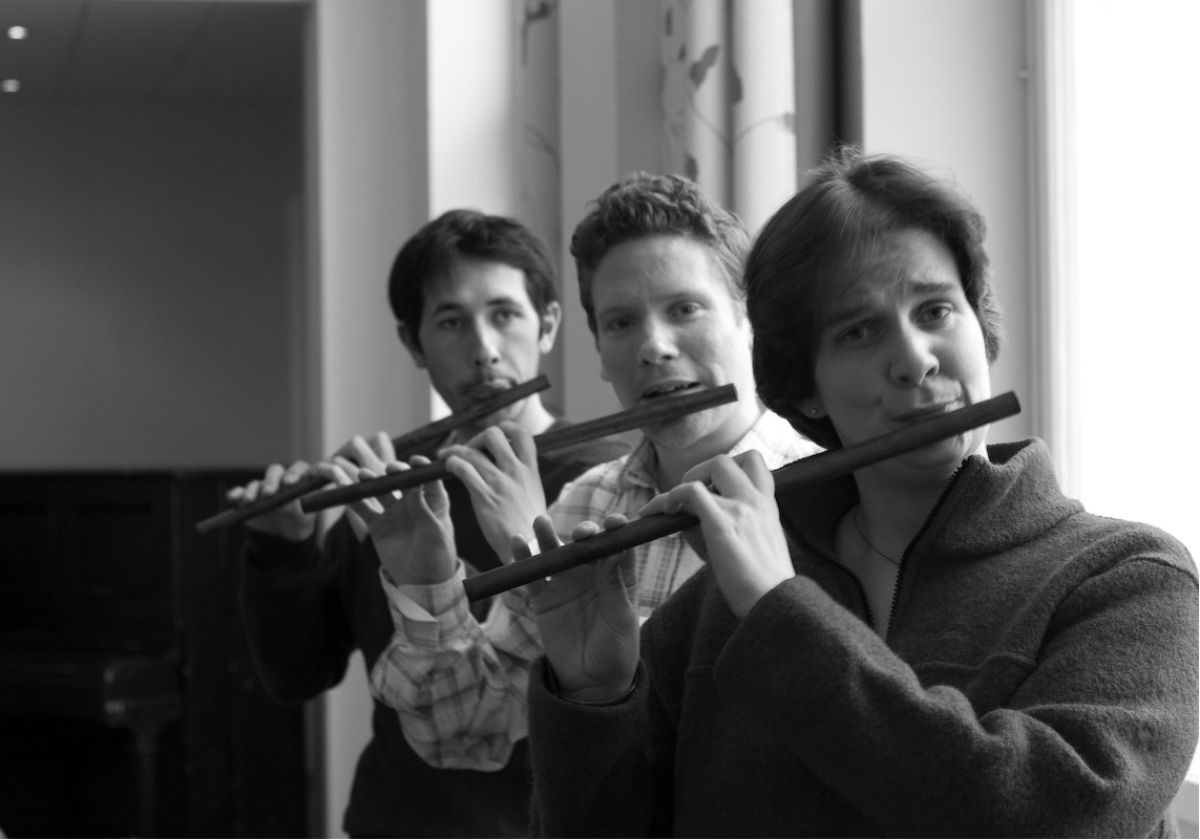Introduction
The activities of the group of eight players in the group entitled Fifres et Tambours under Louis XIV are well documented. The four Fifres were an important part of the court life, and their responsibilities ranged from outdoor to indoor functions. They accompanied the flag and the Sun King on his voyages, provided music for the king’s daily ceremonies and participated in court festivities and stage works. [1] There is, however, very little information about the type of fifres that were actually used by these players, and very little surviving music to account for what they played on these instruments. In order to reconstruct the fifes used in the Grande Écurie, we had to search for additional evidence in earlier as well as later sources: surviving original instruments, fingering charts, repertoire and iconographic material. As the subjects of terminology and iconography are covered by Sarah van Cornewal in her article, [2] this paper will concentrate on the remaining source material: fingering charts, surviving instruments, and contemporary repertoire.




